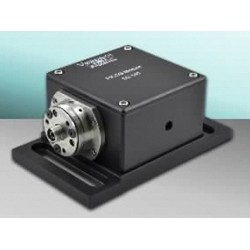Electrical Modules - Vescent Photonics
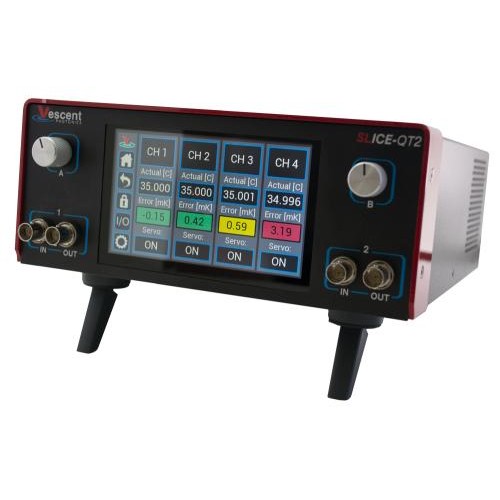
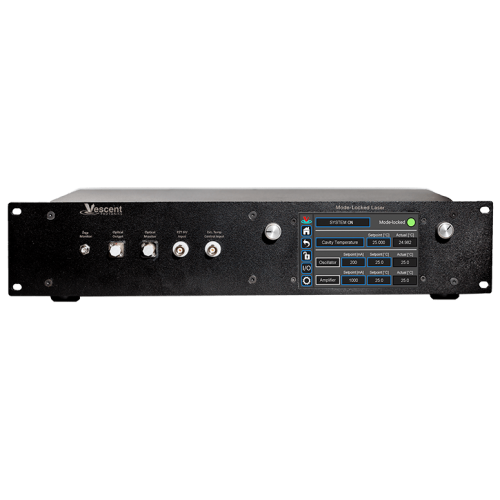
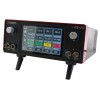
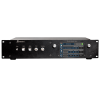
- Stock: Contact us for details
- Click here to: Contact us
- Model: Vescent Electrical Modules
Laser Power Supply, Amplifier, and Controllers
Vescent Electronics for Lasers & Electro-Optics
Vescent laser and electro-optic control electronics provide the lowest noise, highest bandwidth, and most flexibility of any commercially available products. From laser current drivers with a noise density of less than 100 pA/√Hz to temperature controllers with full PID loop filter reconfigurability, our unmatched performance is designed for the most demanding AMO research. Vescent understands that "excellence by design" begins with the electronics for any lab.
SLICE: Slimline ICE Series
After many years in development, the new range of touchscreen-enabled SLICE instruments are being brought to market.
SLICE-DCC
|
|
|
The SLICE-DCC is a compact, efficient cw current controller for driving diode, interband, and quantum cascade lasers; as well as semiconductor optical amplifiers and tapered amplifiers. With two channels of low-noise current control, and proprietary self-adjusting power supply technology, the SLICE-DCC can automatically set a compliance voltage to as high as 20 V - but no higher than necessary to drive the load. The two channels operate independently, including the automatic compliance control, allowing you to drive a traditional diode or a quantum cascade laser with the same device and the same efficiency. The SLICE-DCC includes all the features you expect from a current controller. Thse include high modulation bandwidth, power levelling, interlocking, current limiting, and diode protection circuitry. The unique switching power supply design accepts all standard AC mains voltages and is highly efficient, but is also low noise without linear power technology. |
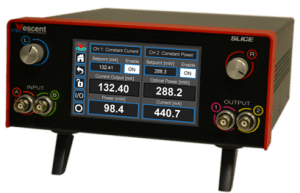
|
SLICE-DHV
|
|
|
The SLICE-DHV is a low-noise high-bandwidth amplifier for controlling electro-optic modulators and especially piezoelectric transducers as found in external-cavity diode lasers (ECDLs). As such it will interface easily with DIY or third-party laser systems allowing for optimum control, or control the repetition rate of a mode locked oscillator. Featuring two gain levels: a traditional 20x delivering the full 0-200 V range with a 0 to 10 V input signal, or 1x (in conjunction with a DC bias) for low noise (< 150 µV rms) control, the SLICE-DHV also has a high current capacity of ±250 mA. This amplifier is ready to take on any number of high-voltage chores. Proprietary power supply technology allows the elimination of bulky and expensive linear power supplies while not sacrificing noise performance. |
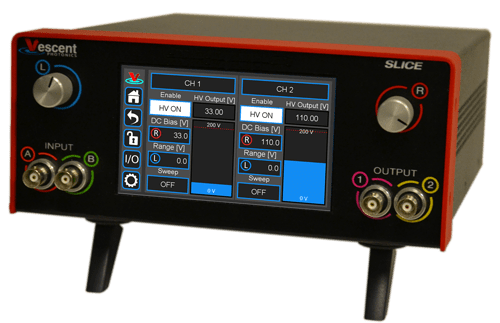
|
SLICE-LC
|
|||||||||||||
|
The SLICE-LC Laser Controller continues the Vescent tradition of offering the absolute lowest noise current controller available. The new power supply technology is a proprietry design that eliminates the heavy and expensive fixed VAC-input linear power supplies of the past. In addition, a pair of PID temperature control loops, for stabilising the laser and its housing, are built in to add further functionality to the SLICE-LC.
|
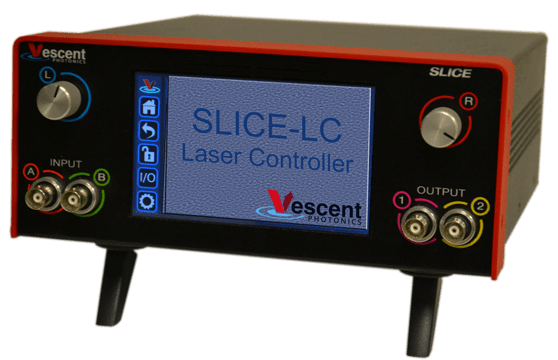
|
||||||||||||
SLICE-QTC
|
|
|
The SLICE-QTC PID Temperature Controller features four independent precision temperature controller channels. This makes it ideal for TECs, laser temperature stabilisation, semiconductor optical amplifiers, tapered amplifiers, optical cavities, PICs, and non-linear crystals. The control loops can be nested or used to manage four separate systems, and with highly adjustable PID corners and gain it is possible to acheive sub-millikelvin temperature stability. Delicate photonic devices, for example, frequency doubling crystals, can be protected from over driving by the SLICE-QTC's slew rate control and output trigger feature. A maximum rate of temperature change can be set, and you can have the confidence that it will not be exceeded. In this way, laser diodes can be safeguarded by automatically shutting down the current if the the temperature goes out of range. The PID temperature loop is easily tuned by using the onboard loop performance monitoring system. |

|


